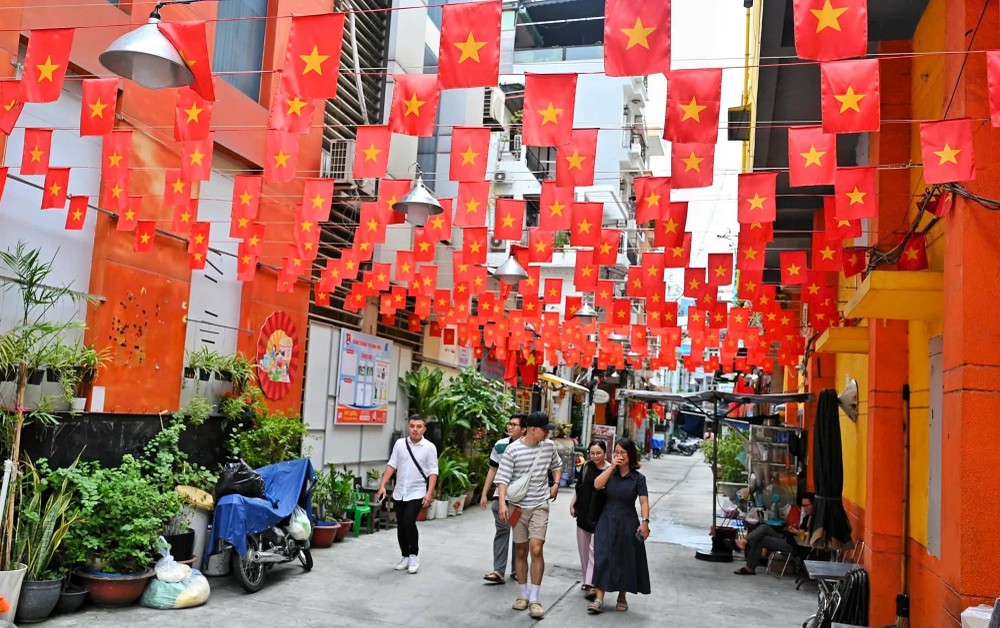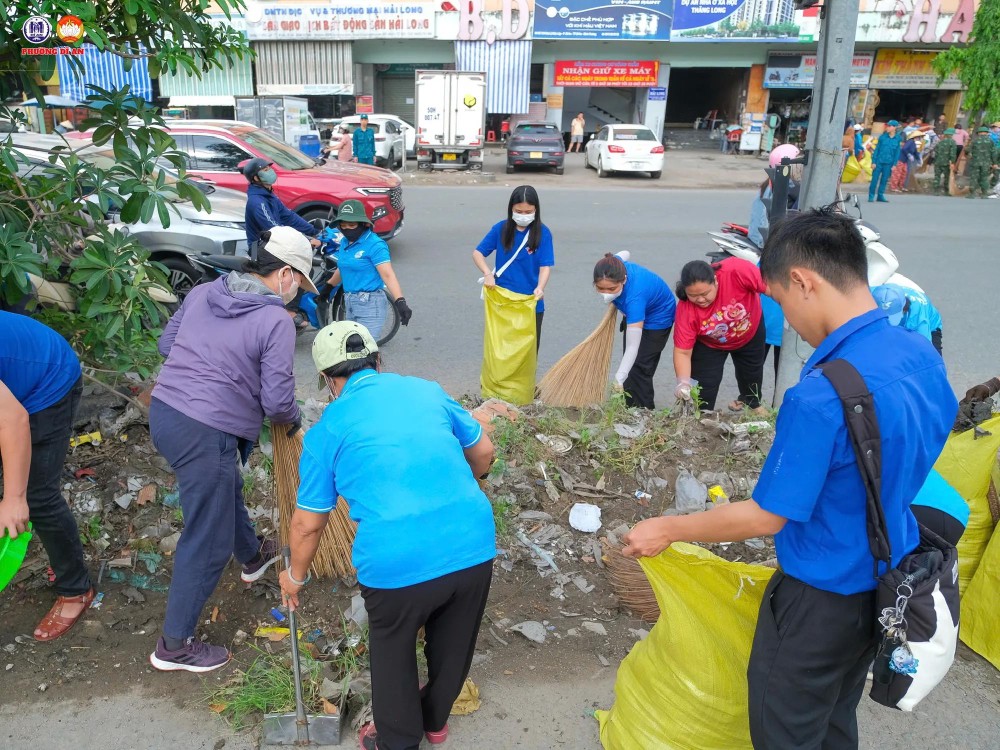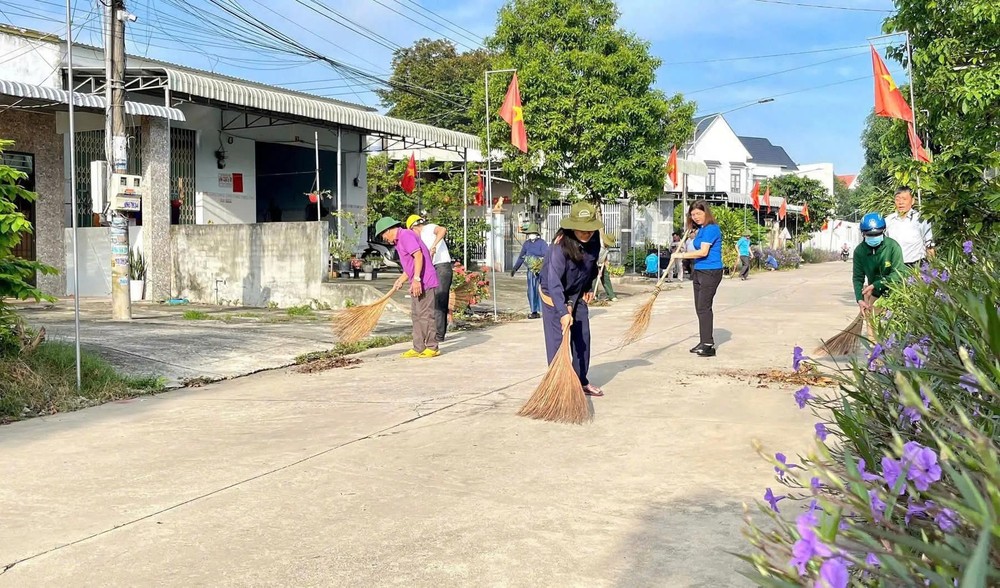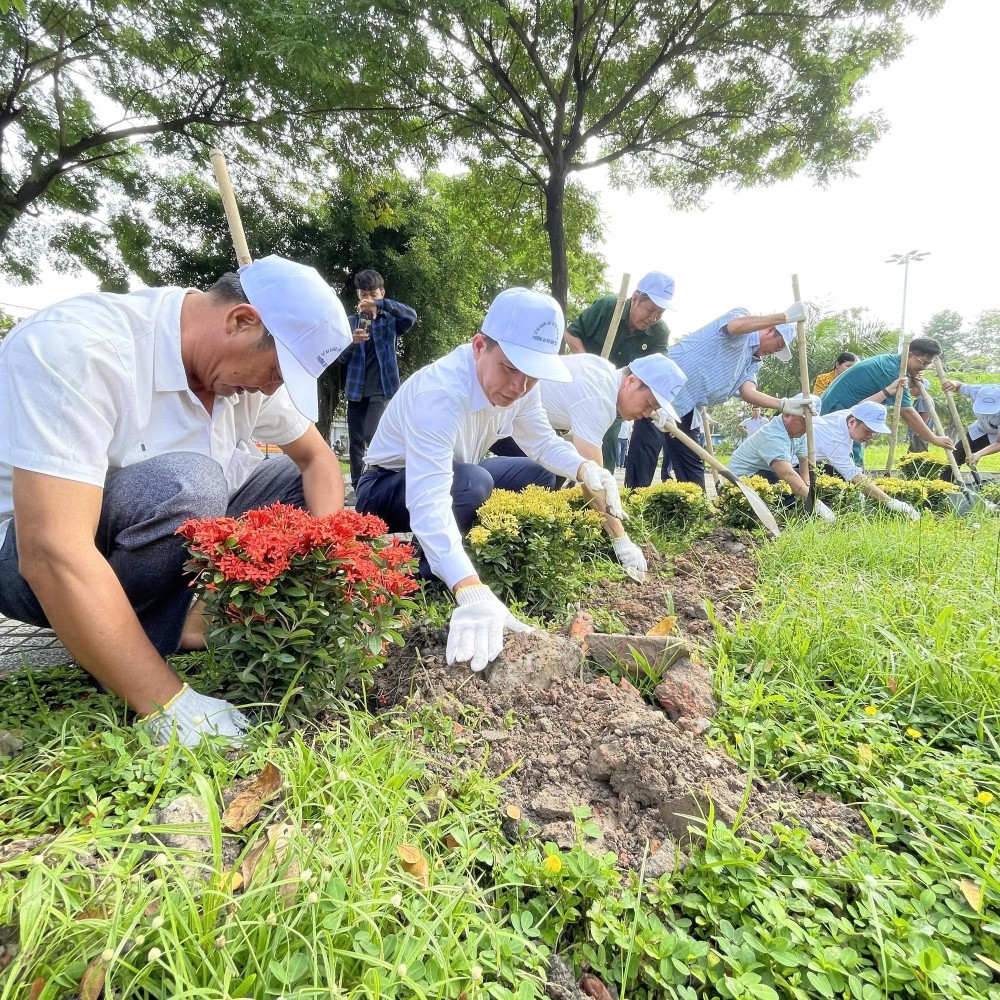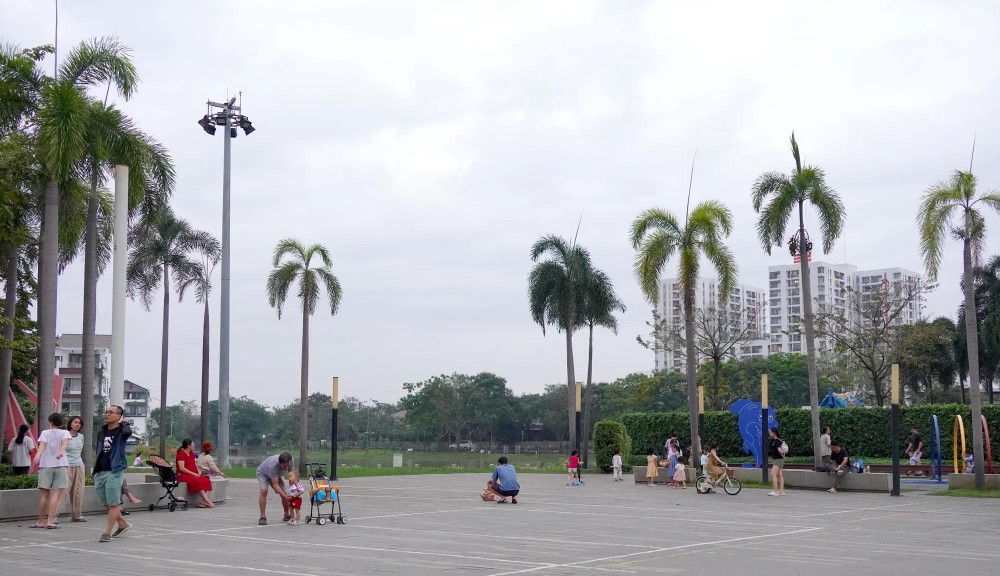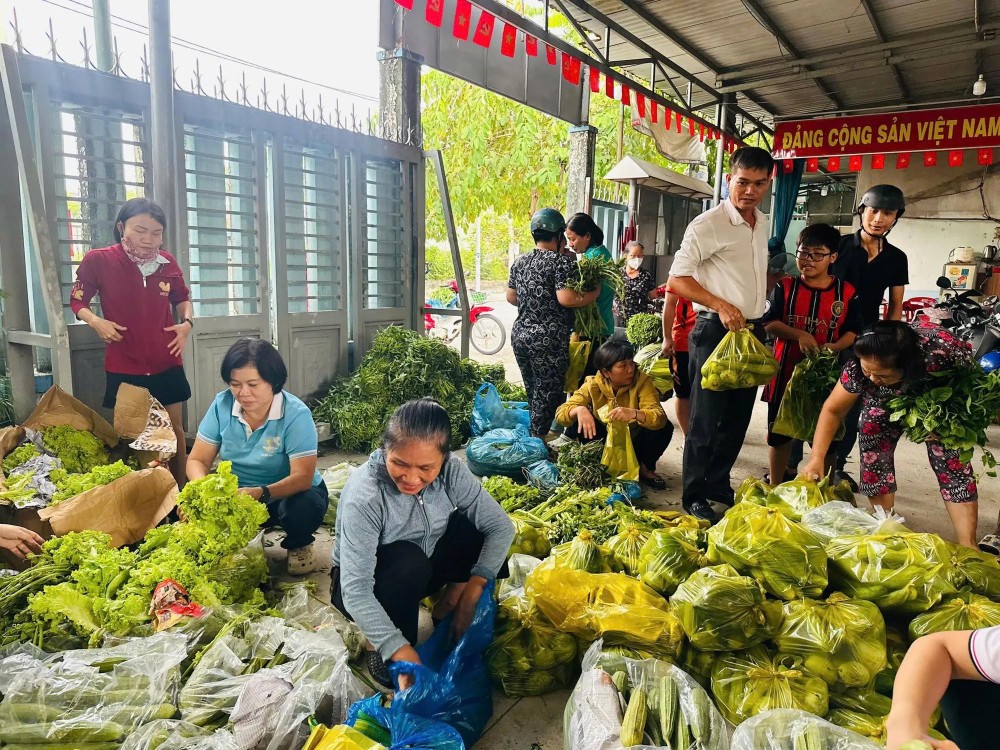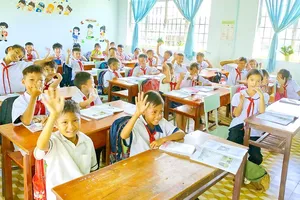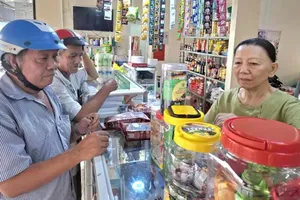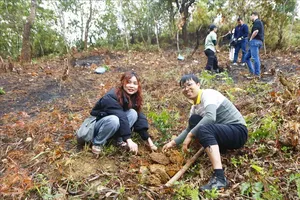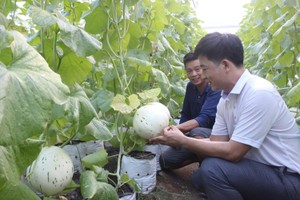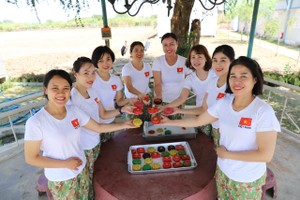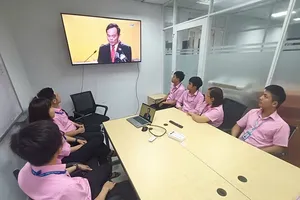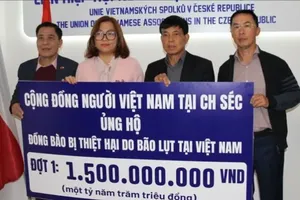The development of a city is measured not only by its grand infrastructure but also by how its community preserves every street corner and pathway. In Ho Chi Minh City, a green vitality is emerging from flower-lined alleys, clean streets, and public parks created through the joint efforts of local residents and authorities.
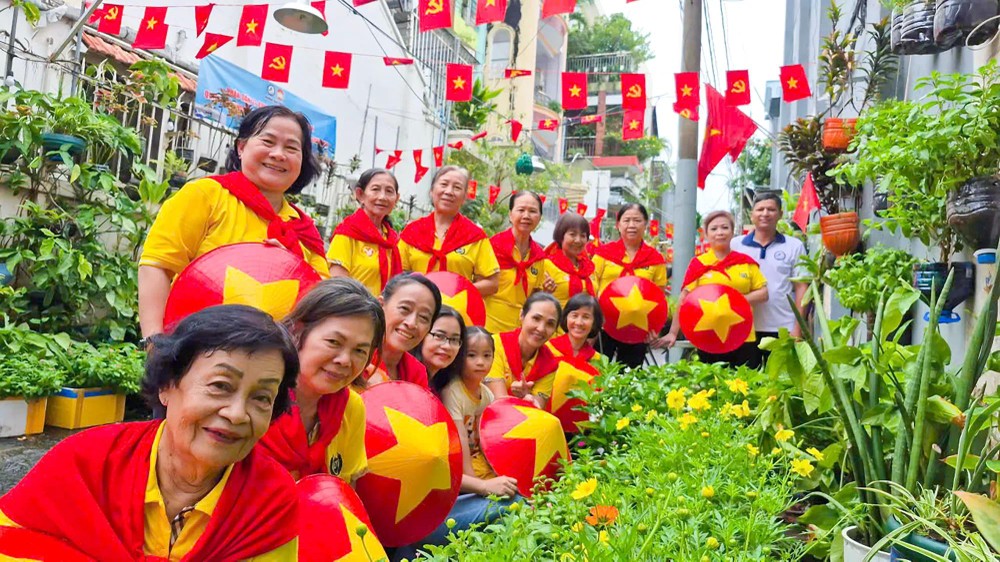
Blossoming alleys and streets
On a weekday morning, Alley 153 on Nguyen Thi Minh Khai Street in Ho Chi Minh City’s Ben Thanh Ward, buzzes with the cheerful chatter of residents planting and tending to trees and flowers. The vibrant flower clusters are the successful outcome of the "Self-Managed Flower Alley" project implemented by the Fatherland Front Working Committee of Neighborhood 27.
Ms. Tieu Thi Xuan Dong, a resident of Alley 153, shared that the plants and flowers embellish the area, creating a colorful scene and a joyful atmosphere for the neighborhood, thereby contributing to urban beautification, a fresh living space, and strengthening neighborly bonds.
Head Nguyen Thi Ngoc Cam of Neighborhood 27 said that for this project, local unions, associations, and residents mobilized philanthropists to sponsor seedlings while also self-funding the purchase of soil and fertilizer to plant and care for the flower alley. The project creates cool green patches and vibrant floral displays, contributing to a green, clean, and beautiful environment and promoting civilized urban living. The variety of ornamental plants, flowers, and medicinal herbs includes jasmine, moss rose, false heather, snake plant, piper lolot, ginger, and citronella. Every morning, households take turns watering and fertilizing the plants and flowers.
The neighborhood also implemented this project in the Alley 25 on Ton That Tung Street, and the alleys 134, 138, and 152 on Bui Thi Xuan Street. Along with caring for the plants, residents regularly maintain the "15 minutes every Saturday morning" clean-up program across all residential areas.
Vice Chairwoman Nguyen Thi Hong Nhung of the Vietnam Fatherland Front Committee and Chairwoman of the Women's Union of Ben Thanh Ward noted that in response to the "City of Many-Colored Flowers" movement, Ben Thanh Ward has focused on effectively implementing various projects across residential areas, religious establishments, businesses, and schools in the ward. Depending on the specific characteristics and realities of each area, the ward selects appropriate and practical activities, such as model flower-lined streets; self-managed flower alleys; blossoming balconies - green yards; green and friendly schools; colorful offices; green religious establishments that connect the community; and flower walls - green fences.
Vice Chairwoman Nguyen Thi Hong Nhung commented that these effective projects and initiatives not only contribute to creating a green, clean, and beautiful urban landscape but also express the residents' love for nature, beauty, and every corner of the city named after Uncle Ho. This transforms thoughts into practical actions, fostering solidarity and community cohesion to build a civilized, prosperous, gracious, and developing Ho Chi Minh City.
More amenities are supplied for serving residents
The lively atmosphere in Binh Trung Park in Ho Chi Minh City’s Binh Trung Ward is in the air as children play and adults exercise. Ms. Nguyen Thuy Anh, a resident of Binh Trung Ward, lives about 50 meters from the park. Every afternoon after picking up her children from school, she takes them to the park for about 30 minutes before heading home for dinner. The female resident revealed that Binh Trung Park was previously vacant land, overgrown with weeds, surrounded by trash and rubble, making the neighborhood look unkempt while the area lacked recreational facilities.
Therefore, residents were overjoyed when the locality invested nearly 4 billion Vietnamese Dong to build the park on a plot of over 4,300 square meters. Long Truong Ward also has a park covering nearly 3,500 square meters built on vacant land within a residential area.
Twice a month, residents on both sides of Phan Chu Trinh Street in Hamlet 9 of Ho Chi Minh City’s Phu Giao Commune mobilize for environmental cleanup. This is the locality's green, clean, and beautiful street. Head Pham Van Chat of the Steering Committee of Hamlet 9 in the commune stated that Phan Chu Trinh Street is about 400m long with 50 households living along both sides. The residents in the hamlet voluntarily participate in environmental sanitation, planting trees, and contributing money to purchase cameras to maintain security. To date, seven security cameras have been installed along this route. Building green, clean, and beautiful roads with the consensus of the people is a correct and supported policy of the local authorities.
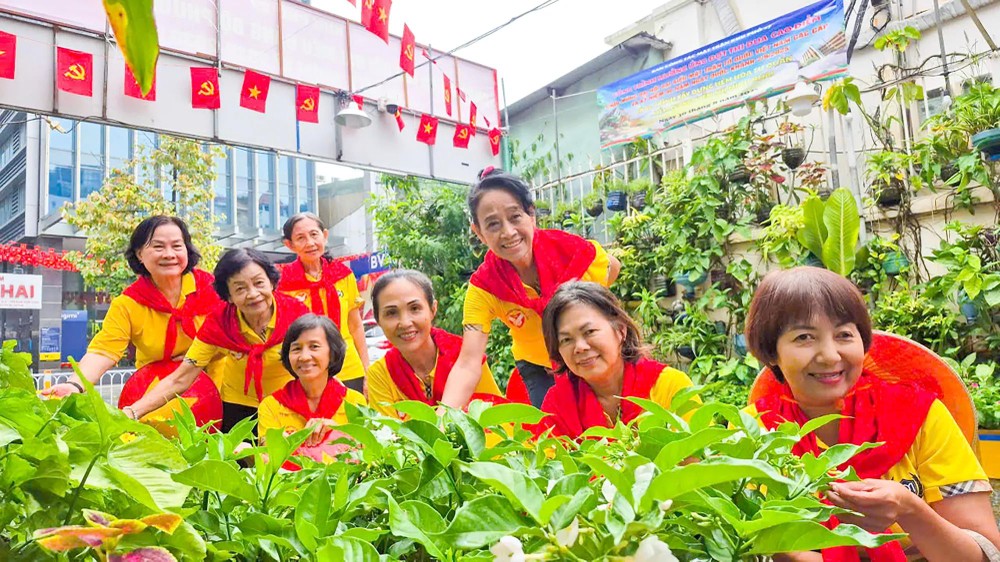
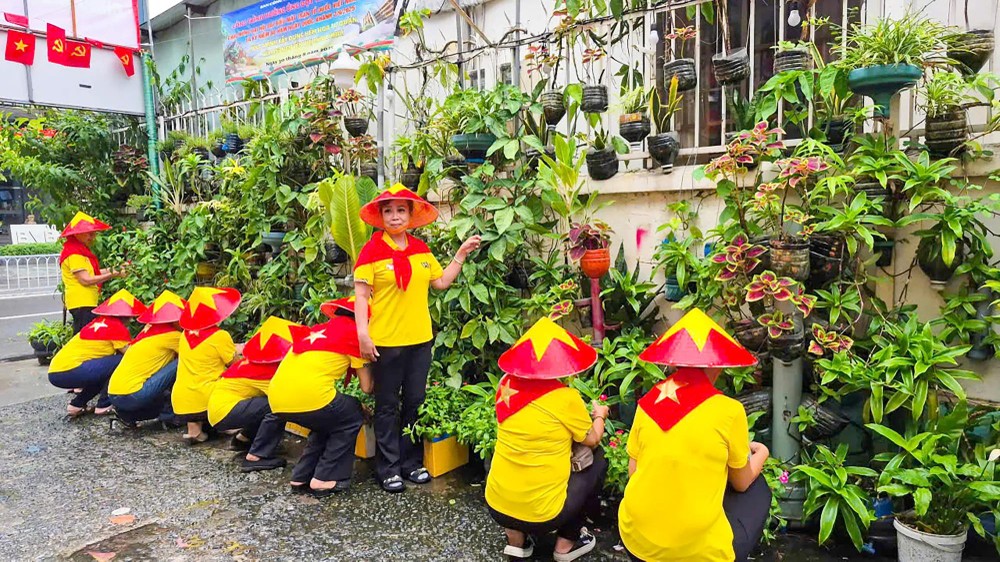
Under this policy, Phu Giao Commune effectively maintains activities in response to "Civilized Saturday" and the "City of Many-Colored Flowers" movement. As a result, 23 out of 23 hamlets achieved the gracious residential area standard for 2025 and three new "Phu Giao of Many-Colored Flowers" projects, with the total length of 5.3km, were launched.
Civilized and clean-up events on every Saturday, including weeding, sanitation, drainage ditch dredging, waste collection and disposal, and flower planting along routes, have been organized 151 times with over 3,842 participants. Meanwhile, the Fatherland Front Working Committees of the hamlets in Phu Giao Commune simultaneously initiated the renovation and embellishment of 30 national flag routes, flower routes, security camera routes, and civilized lighting projects, with a total cost of VND352 million (US$13,316).
The policy of building bright, green, clean, and beautiful living spaces always receives the approval and support of residents, who contribute funds and labor to make the streets and corners more presentable and cleaner. These days, when passing by the Song Than Overpass area in Ho Chi Minh City’s Di An Ward, it is noticeable that the trash under the bridge is gone. This change is the result of the joint efforts of local authorities and residents.
Secretary Vo Van Hong of the Party Committee and Chairman of the People's Council of Di An Ward said that faced with the indiscriminate dumping of trash under the bridge and in public areas, the locality organized clean-up campaigns to maintain environmental sanitation and beautify the neighborhood, streets, and rented areas.
With the goal of improving residents' quality of life, Dong Thanh Commune has implemented many civilized, clean and beautiful alleys, linked to the "30 minutes for a Green- Clean-Beautiful City" campaign, focusing on clearing waste hotspots in their jurisdiction; planting and caring for trees and flowers in the alleys; and removing illegal advertisements and flyers posted on utility poles, light poles, and trees. Dong Thanh Commune promotes propaganda and mobilization of union members, association members, and residents to regularly implement disease prevention measures at home and in residential areas, including clearing discarded materials and water containers.
The commune also organized a “zero Vietnamese dong vegetables and fruits" program, delivering fresh produce to residents. The vegetables and fruits were divided into portions by union members and presented directly to the people, helping to spread the spirit of mutual support, community contribution, and providing practical assistance to disadvantaged households.
